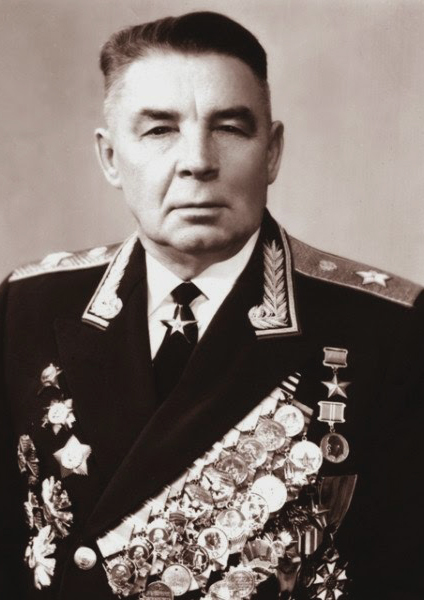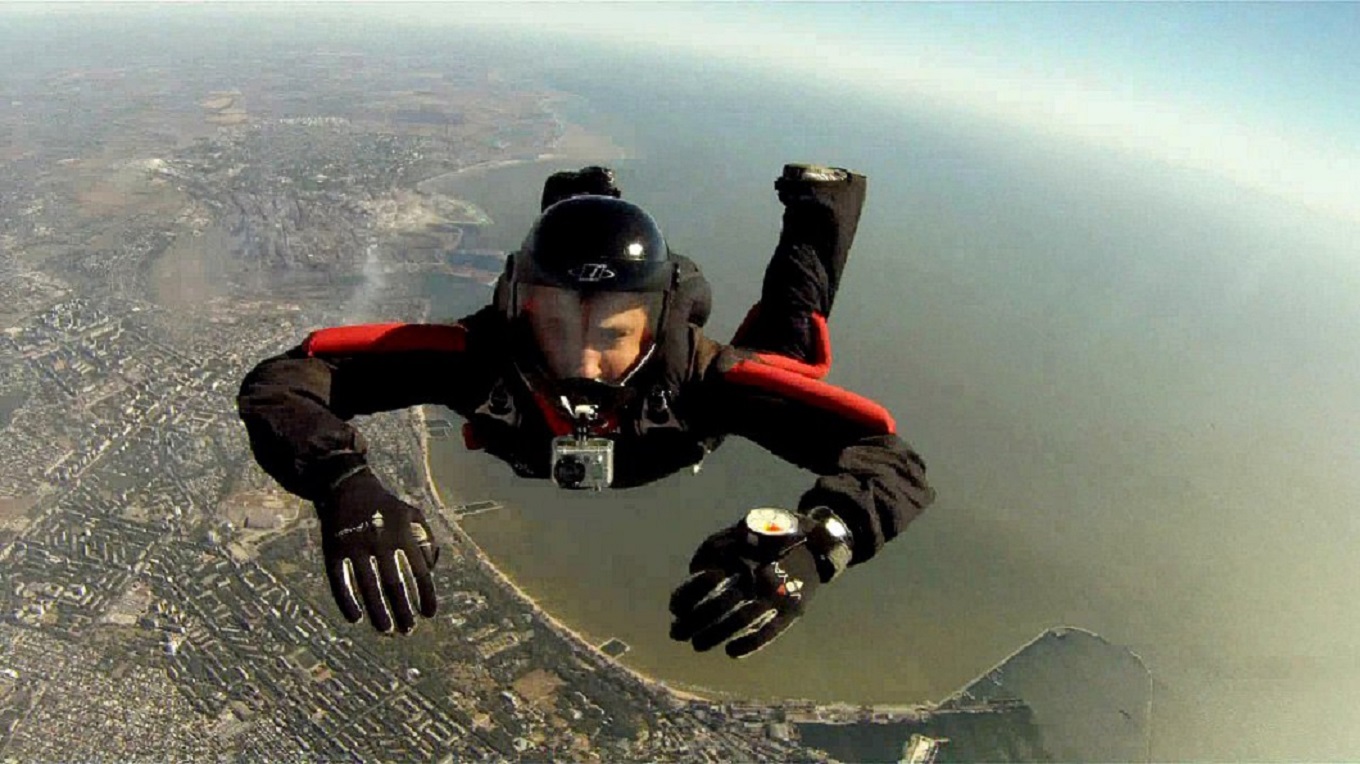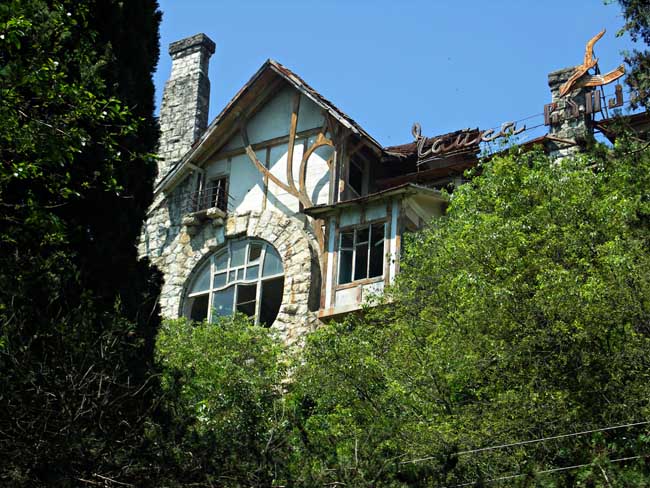|
Mark Yevtyukhin
Mark Nikolayevich Yevtyukhin (russian: link=no, Марк Никола́евич Евтю́хин, 1 May 1964 – 1 March 2000) was a Russian Lieutenant-Colonel and Commander of the Pskov-based 2nd Battalion (listing among others the 6th Company), 104th Guards Airborne Regiment, 76th Guards Airborne Division, who was killed in action during the Battle for Height 776.0 near Ulus-Kert, Chechnya. For his actions in that battle, he was posthumously honoured as a Hero of the Russian Federation. Biography Yevtyukhin was born in 1964 in Yoshkar-Ola, in the Mari ASSR, to Nikolai Vasiliyevich Yevtyukhin and Lidia Ivanovna Yevtyukhina. His father worked as an officer with a military manufacturer, and his mother also worked in manufacturing organisations. He was born exactly nine months after his parents' wedding, and was named after his great-grandfather, who was a Kuban Cossack, and was the first of the couple's two children. While still an infant his family moved to Chukotka bec ... [...More Info...] [...Related Items...] OR: [Wikipedia] [Google] [Baidu] |
Yoshkar-Ola
Yoshkar-Ola ( Mari and russian: Йошкар-Ола) is the capital city of the Mari El Republic, Russia. Yoshkar-Ola means “red city” in Mari and was formerly known as Tsaryovokokshaysk () before 1919, as Krasnokokshaysk () between 1919 and 1927 both after the Malaya Kokshaga River and Charla (), by the Mari people. Yoshkar-Ola was established as a military fortress in 1584, following the Russian conquest of the Mari-inhabited regions of the Volga and its tributaries. It is one of the centers of the Mari people (especially of the Meadow Mari subgroup) and the administrative center of the Yoshkar-Ola city district. Demographics Population: History Yoshkar-Ola was established as a military fortress in 1584, following the Russian conquest of the Mari region. Yoshkar-Ola means “red city” in Mari and before 1919 was known as Tsaryovokokshaysk (), between 1919 and 1927 also as Krasnokokshaysk () both after the Malaya Kokshaga River and is known as Charla () amongst t ... [...More Info...] [...Related Items...] OR: [Wikipedia] [Google] [Baidu] |
Ryazan
Ryazan ( rus, Рязань, p=rʲɪˈzanʲ, a=ru-Ryazan.ogg) is the largest city and administrative center of Ryazan Oblast, Russia. The city is located on the banks of the Oka River in Central Russia, southeast of Moscow. As of the 2010 Census, Ryazan had a population of 524,927, making it the 33rd most populated city in Russia, and the fourth most populated in Central Russia after Moscow, Voronezh, and Yaroslavl. Ryazan was previously known as Pereyaslavl-Ryazansky () until 1778, where it became the new capital of the Principality of Ryazan following the Mongol invasion of Kievan Rus'. The original capital, located downstream on the Oka and now known as Old Ryazan (), was among the first cities in Russia to be beseiged and destroyed during the invasion that began in 1237. The city is known for the Ryazan Kremlin, a historic museum; the Pozhalostin Museum, one of the oldest art museums in Russia; the Memorial Museum-Estate of Academician I.P. Pavlov; and the Ryazan Museum ... [...More Info...] [...Related Items...] OR: [Wikipedia] [Google] [Baidu] |
Ryazan Higher Airborne Command School
The General V.F. Margelov Ryazan Guards Higher Airborne twice Red Banner Order of Suvorov Command School (RGVVDKU) () is a military educational institute of the Russian Ministry of Defense, situated in Ryazan, about southeast of Moscow. It was first formed as the Ryazan Infantry Courses on 13 November 1918 – thus it is one of the oldest active military academies in modern day Russia. It is the official military academy and advanced training center of the Russian Airborne Forces. Early History On the basis of the Order of the People's Commissar for Military Affairs No. 743, on 29 August 1918, the formation of the 1st Ryazan courses of the Red Army began; located in Ryazan, the basis of the current academy. The formation of the courses ended on 13 November 1918, with the courses being named "1st Ryazan Soviet Infantry Courses for the Command Personnel of the Red Army". Civil War In July 1918, mobilization into the ranks of the Red Army began. Almost weekly, a mobilized re ... [...More Info...] [...Related Items...] OR: [Wikipedia] [Google] [Baidu] |
Vasily Margelov
Vasily Filippovich Margelov (Russian language, Russian: Василий Филиппович Маргелов; be, Васі́ль Пілі́павіч Марге́лаў; – 4 March 1990) was a Red Army General of the army (USSR), General who was the commander of the Soviet Airborne Forces (VDV) from 1954 to 1959 and from 1961–1979. Margelov modernized the VDV and was a Hero of the Soviet Union. Author Carey Schofield wrote that Margelov "...is considered to be the real father of the VDV...[leading]...them through their most vital period of development." Early life Vasily Markelov (later changed to Margelov due to a spelling error) was born on 27 December 1906 in the city of Ekaterinoslav, the son of Belarusians, Belarusian immigrants Filipp Ivanovich Markelov and Agata Stepanovna. His father, Filipp Markelov, worked in an iron foundry. In 1913, the Markelov family returned to Belarus and settled in Kastsyukovichy, the hometown of Margelov's father, where he graduated from ... [...More Info...] [...Related Items...] OR: [Wikipedia] [Google] [Baidu] |
Skydiving
Parachuting, including also skydiving, is a method of transiting from a high point in the atmosphere to the surface of Earth with the aid of gravity, involving the control of speed during the descent using a parachute or parachutes. For human skydiving, it may involve a phase of more or less free-falling (the skydiving segment) which is a period when the parachute has not yet been deployed and the body gradually accelerates to terminal velocity. For cargo parachuting, the parachute descent may begin immediately, such as a parachute-airdrop in the lower atmosphere of Earth, or be significantly delayed, such as in a planetary atmosphere where an object is descending "under parachute" following atmospheric entry from space, and may begin only after the hypersonic entry phase and initial deceleration that occurs due to friction with the thin upper atmosphere. History Common uses Parachuting is performed as a recreational activity and a competitive sport, and is widel ... [...More Info...] [...Related Items...] OR: [Wikipedia] [Google] [Baidu] |
Aerodrome
An aerodrome (Commonwealth English) or airdrome (American English) is a location from which aircraft flight operations take place, regardless of whether they involve air cargo, passengers, or neither, and regardless of whether it is for public or private use. Aerodromes include small general aviation airfields, large commercial airports, and military air bases. The term ''airport'' may imply a certain stature (having satisfied certain certification criteria or regulatory requirements) that not all aerodromes may have achieved. That means that all airports are aerodromes, but not all aerodromes are airports. Usage of the term "aerodrome" remains more common in Ireland and Commonwealth nations, and is conversely almost unknown in American English, where the term "airport" is applied almost exclusively. A water aerodrome is an area of open water used regularly by seaplanes, floatplanes or amphibious aircraft for landing and taking off. In formal terminology, as defined by th ... [...More Info...] [...Related Items...] OR: [Wikipedia] [Google] [Baidu] |
Education In Russia
In Russia, the state provides most education services regulating education through the Ministry of Education and Science. Regional authorities regulate education within their jurisdictions within the prevailing framework of federal laws. Russia's expenditure on education has grown from 2.7% of the GDP in 2005 to 3.8% in 2013, but remains below the OECD average of 5.2%. Before 1990 the course of school training in the Soviet Union lasted 10 years, but at the end of 1990 an 11-year course officially came into operation. Education in state-owned secondary schools is free; ''first'' tertiary (university level) education is free with reservations: a substantial number of students enroll on full pay. Male and female students have equal shares in all stages of education,Education for all by 2015, p. 82 and underlying data tables except in tertiary education where women lead with 57%.Education for all by 2015, p. 316 A 2015 estimate by the United States Central Intelligence Agency put ... [...More Info...] [...Related Items...] OR: [Wikipedia] [Google] [Baidu] |
Severomorsk
Severomorsk (russian: Северомо́рск), known as Vayenga () until April 18, 1951, is a closed town in Murmansk Oblast, Russia. Severomorsk is the main administrative base of the Russian Northern Fleet. The town is located on the coast of the Barents Sea along the Kola Bay northeast of Murmansk, the administrative centre of the oblast, to which it is connected by railway and a motorway. History Early settlement The first settlement on the site of the modern city arose between 1896 and 1897. It was named Vayenga (), after the river, the name of which itself comes from the Sami "vayongg", meaning "doe" or "reindeer". In 1917, only thirteen people lived in the settlement, who engaged in hunting, fishing and animal husbandry. The founding of the Northern Fleet Base In 1926, the Murmansk office of logging was founded, one of the artels of which was sent to Vayenga. A barracks, a dormitory, and a banya were built, and a telephone line was laid through the village. In 1933, t ... [...More Info...] [...Related Items...] OR: [Wikipedia] [Google] [Baidu] |
Tbilisi
Tbilisi ( ; ka, თბილისი ), in some languages still known by its pre-1936 name Tiflis ( ), is the Capital city, capital and the List of cities and towns in Georgia (country), largest city of Georgia (country), Georgia, lying on the banks of the Kura (Caspian Sea), Kura River with a population of approximately 1.5 million people. Tbilisi was founded in the 5th century Anno Domini, AD by Vakhtang I of Iberia, and since then has served as the capital of various Georgian kingdoms and republics. Between 1801 and 1917, then part of the Russian Empire, Tiflis was the seat of the Caucasus Viceroyalty (1801–1917), Caucasus Viceroyalty, governing both the North Caucasus, northern and the Transcaucasia, southern parts of the Caucasus. Because of its location on the crossroads between Europe and Asia, and its proximity to the lucrative Silk Road, throughout history Tbilisi was a point of contention among various global powers. The city's location to this day ensures its p ... [...More Info...] [...Related Items...] OR: [Wikipedia] [Google] [Baidu] |
Gagra
Gagra ( ka, გაგრა; Abkhaz and Russian: Гагра) is a town in Abkhazia/Georgia, sprawling for 5 km on the northeast coast of the Black Sea, at the foot of the Caucasus Mountains. Its subtropical climate made Gagra a popular health resort in Imperial Russian and Soviet times. It had a population of 26,636 in 1989, but this has fallen considerably due to the ethnic cleansing of Georgians in Abkhazia and other demographic shifts during and after the War in Abkhazia (1992–93). Gagra is the centre of the district of the same name. It is located in the western part of Region of Abkhazia, and river Psou serves as a border with Krasnodar Krai of Russia. Etymology According to some Georgian scholars, ''Gagra'' is derived from ''Gakra'' meaning "walnut" in the Svan language. According to the Soviet writer Bondaryev, the name of the city originates from the local ''Gagaa'' clan. According to Professor V. Kvarchija, Gagra ( Gagra and the Abkhazian capital Sukhumi wer ... [...More Info...] [...Related Items...] OR: [Wikipedia] [Google] [Baidu] |
Russian Far East
The Russian Far East (russian: Дальний Восток России, r=Dal'niy Vostok Rossii, p=ˈdalʲnʲɪj vɐˈstok rɐˈsʲiɪ) is a region in Northeast Asia. It is the easternmost part of Russia and the Asian continent; and is administered as part of the Far Eastern Federal District, which is located between Lake Baikal in eastern Siberia and the Pacific Ocean. The area's largest city is Khabarovsk, followed by Vladivostok. The region shares land borders with the countries of Mongolia, China, and North Korea to its south, as well as maritime boundaries with Japan to its southeast, and with the United States along the Bering Strait to its northeast. The Russian Far East is often considered as a part of Siberia (previously during the Soviet era when it was called the Soviet Far East). Terminology In Russia, the region is usually referred to as just "Far East" (). What is known in English as the Far East is usually referred to as "the Asia-Pacific Region" (, abbrevia ... [...More Info...] [...Related Items...] OR: [Wikipedia] [Google] [Baidu] |





%2C_October_2010.jpg)
_(1966).png)

